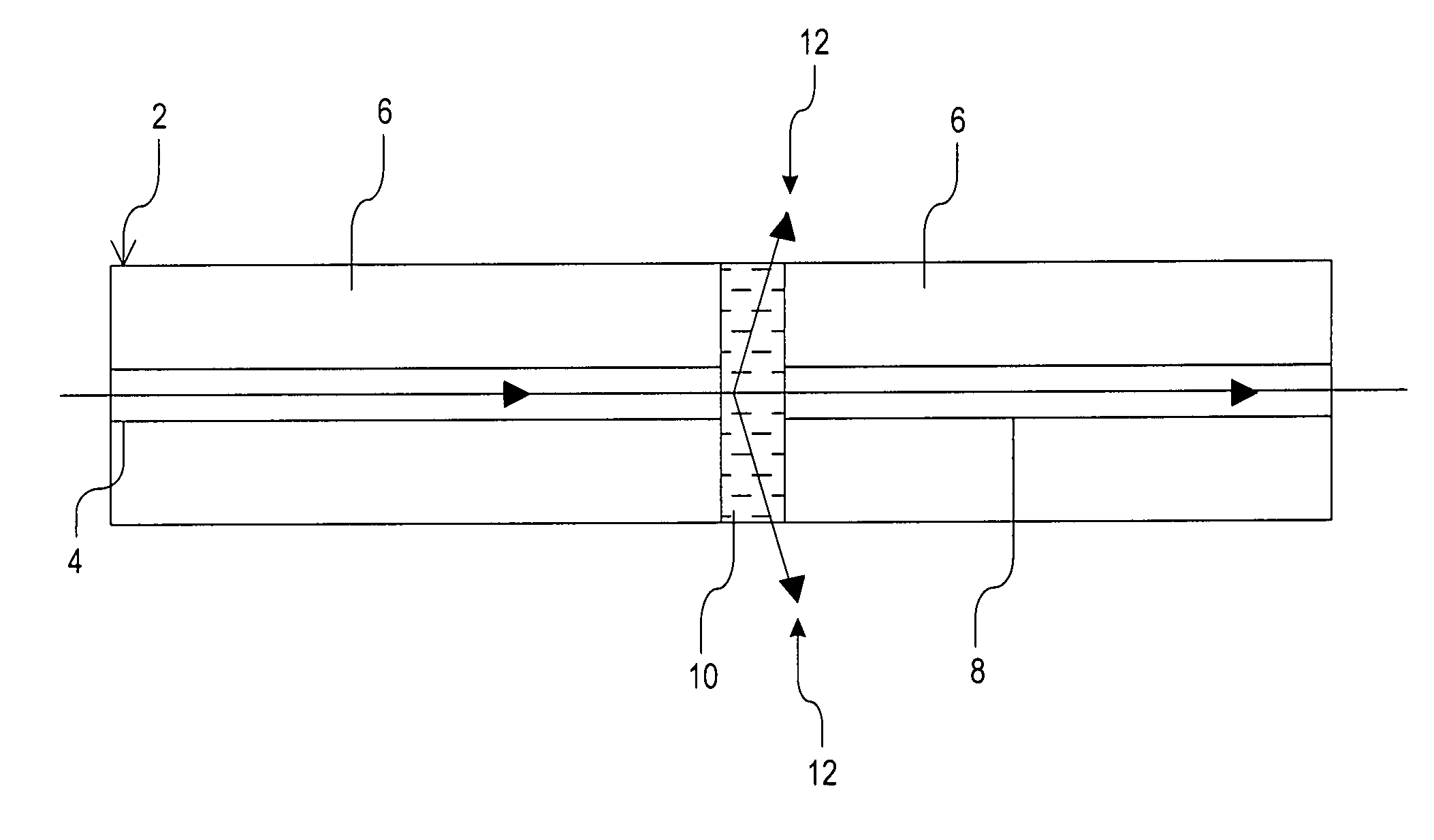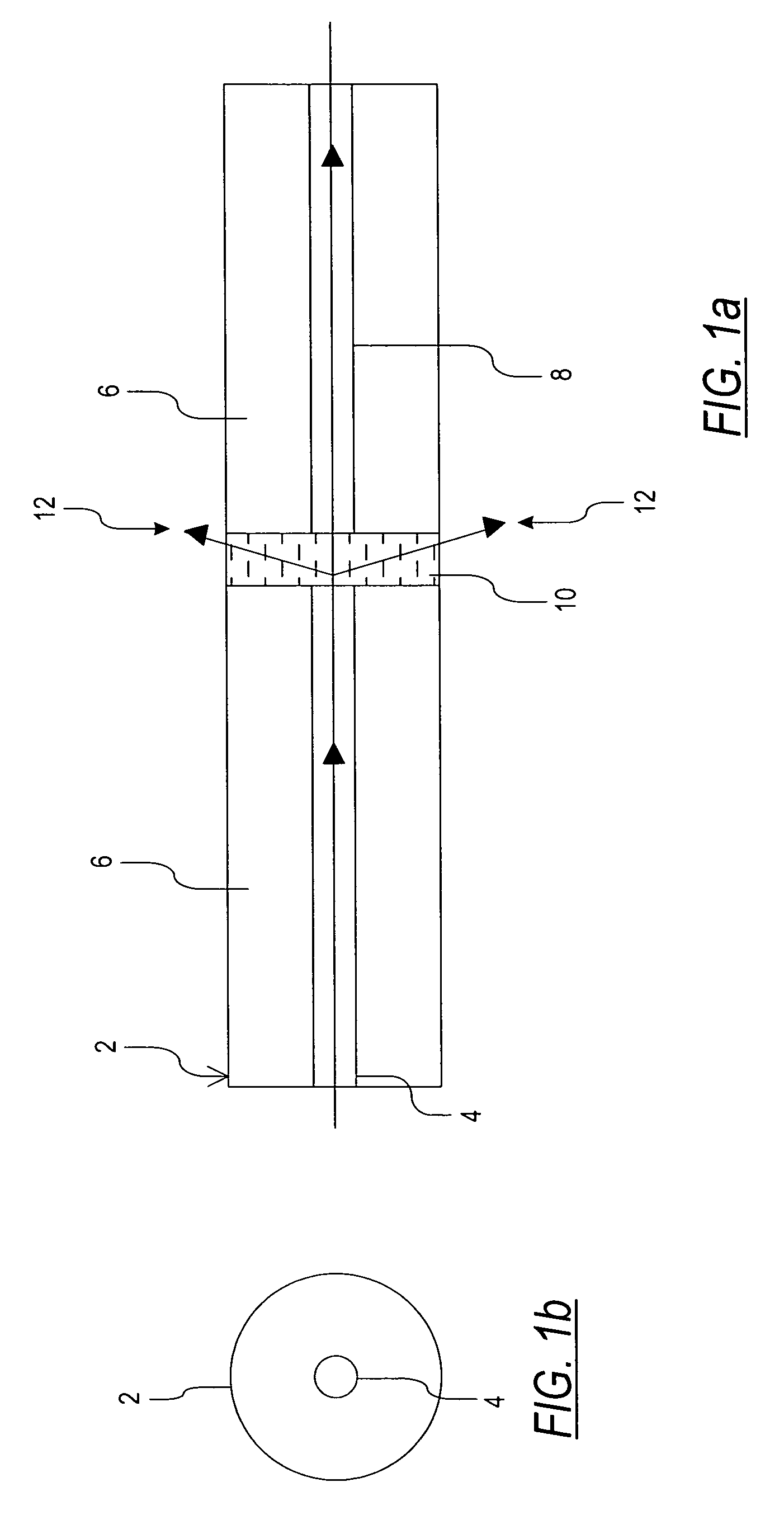Optical limiter
a technology of optical limiters and power limiters, which is applied in the direction of optical elements, lighting and heating apparatuses, instruments, etc., can solve the problems of large volume of liquid to be heated, large amount of energy propagation, and high power requirements
- Summary
- Abstract
- Description
- Claims
- Application Information
AI Technical Summary
Benefits of technology
Problems solved by technology
Method used
Image
Examples
Embodiment Construction
[0050]In the limiter configuration and operation illustrated in FIGS. 1a and 1b, light enters a fiber or waveguide 2 having a core 4 and a cladding 6 (e.g., SMF 28 by Corning, USA), and impinges on an optical-limiting solid mixture 10 placed at the exit of the core 4. The optical-limiting solid mixture 10 is composed of a suspension of light absorbing particles, smaller than the wavelength of visible light (smaller than 0.5 microns) and preferably smaller than 0.1 microns (nano-powder) equally distributed or suspended in a solid, e.g., polymer, material having a large negative index change with temperature (dn / dT). The absorbing material include at least one metallic or non-metallic material selected from the group consisting of: Ag, Au, Ni, Va, Ti, Co, Cr, C, Re, Si and mixtures of such materials. The polymer host material, having a large (dn / dT), may be: PMMA or its derivatives, polymer based on epoxy resins, glass, spin-on glass (SOG) or other sol-gel materials. The optical-limit...
PUM
| Property | Measurement | Unit |
|---|---|---|
| diameter | aaaaa | aaaaa |
| wavelength | aaaaa | aaaaa |
| wavelength | aaaaa | aaaaa |
Abstract
Description
Claims
Application Information
 Login to View More
Login to View More - R&D
- Intellectual Property
- Life Sciences
- Materials
- Tech Scout
- Unparalleled Data Quality
- Higher Quality Content
- 60% Fewer Hallucinations
Browse by: Latest US Patents, China's latest patents, Technical Efficacy Thesaurus, Application Domain, Technology Topic, Popular Technical Reports.
© 2025 PatSnap. All rights reserved.Legal|Privacy policy|Modern Slavery Act Transparency Statement|Sitemap|About US| Contact US: help@patsnap.com



